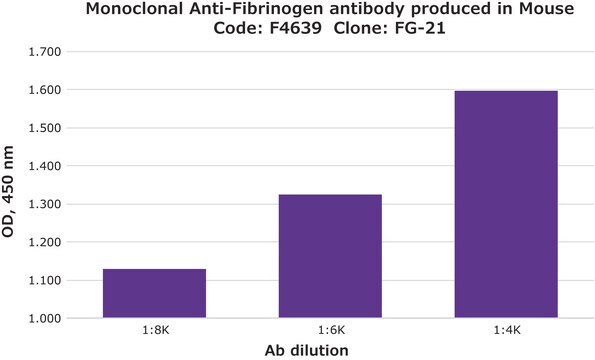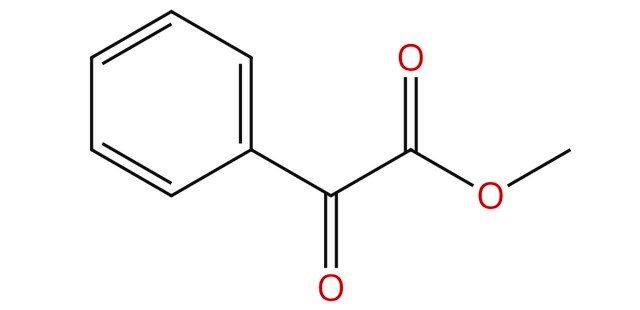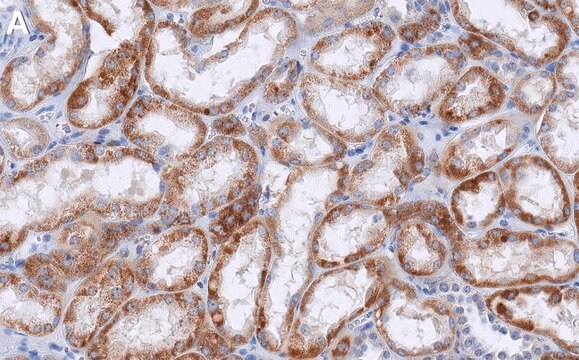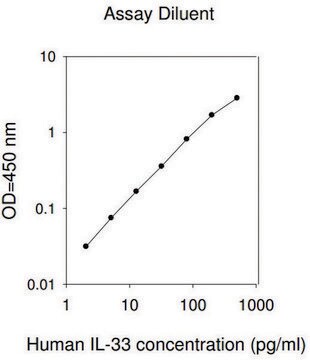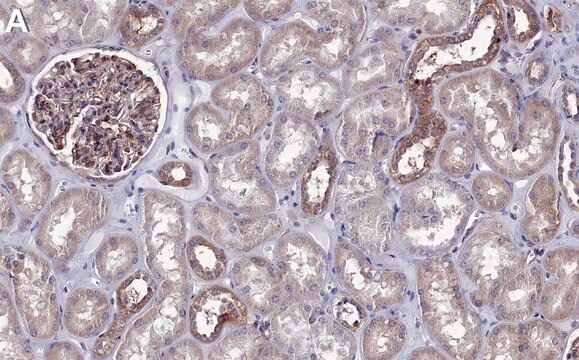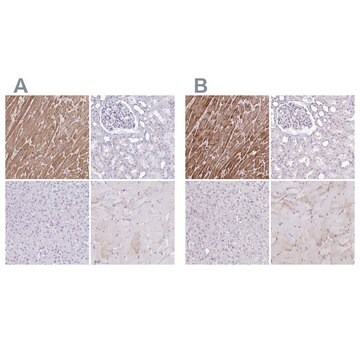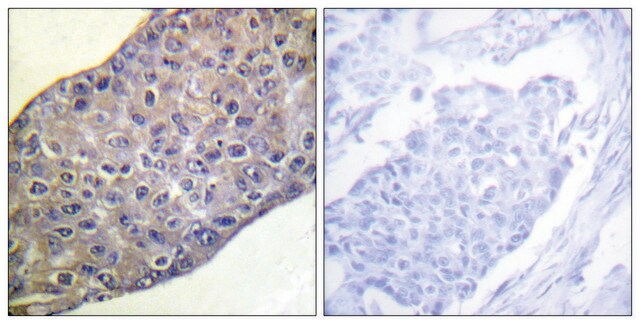PLA0208
Rabbit anti-BMI1 Antibody, Affinity Purified
Powered by Bethyl Laboratories, Inc.
Synonim(y):
B lymphoma Mo-MLV insertion region 1 homolog, B lymphoma Mo-MLV insertion region 1 homolog (mouse), BMI1 polycomb ring finger oncogene, BMI1 polycomb ring finger proto-oncogene, FLVI2/BMI1, PCGF4, RNF51, flvi-2/bmi-1, murine leukemia viral (bmi-1) oncogene homolog, polycomb group RING finger protein 4, polycomb group protein Bmi1, polycomb group ring finger 4, ring finger protein 51
About This Item
Polecane produkty
pochodzenie biologiczne
rabbit
Poziom jakości
forma przeciwciała
affinity purified immunoglobulin
rodzaj przeciwciała
primary antibodies
klasa czystości
Powered by Bethyl Laboratories, Inc.
reaktywność gatunkowa
mouse, human
metody
immunohistochemistry: 1:500- 1:2,000
immunoprecipitation (IP): 2-5 μg/mg
western blot: 1:2,000- 1:10,000
nr dostępu
NP_005171.4
numer dostępu UniProt
Warunki transportu
wet ice
temp. przechowywania
2-8°C
informacje o genach
rabbit ... BMI1(648)
Immunogen
Postać fizyczna
Inne uwagi
Oświadczenie o zrzeczeniu się odpowiedzialności
Nie możesz znaleźć właściwego produktu?
Wypróbuj nasz Narzędzie selektora produktów.
Kod klasy składowania
12 - Non Combustible Liquids
Klasa zagrożenia wodnego (WGK)
nwg
Temperatura zapłonu (°F)
Not applicable
Temperatura zapłonu (°C)
Not applicable
Wybierz jedną z najnowszych wersji:
Certyfikaty analizy (CoA)
Nie widzisz odpowiedniej wersji?
Jeśli potrzebujesz konkretnej wersji, możesz wyszukać konkretny certyfikat według numeru partii lub serii.
Masz już ten produkt?
Dokumenty związane z niedawno zakupionymi produktami zostały zamieszczone w Bibliotece dokumentów.
Nasz zespół naukowców ma doświadczenie we wszystkich obszarach badań, w tym w naukach przyrodniczych, materiałoznawstwie, syntezie chemicznej, chromatografii, analityce i wielu innych dziedzinach.
Skontaktuj się z zespołem ds. pomocy technicznej